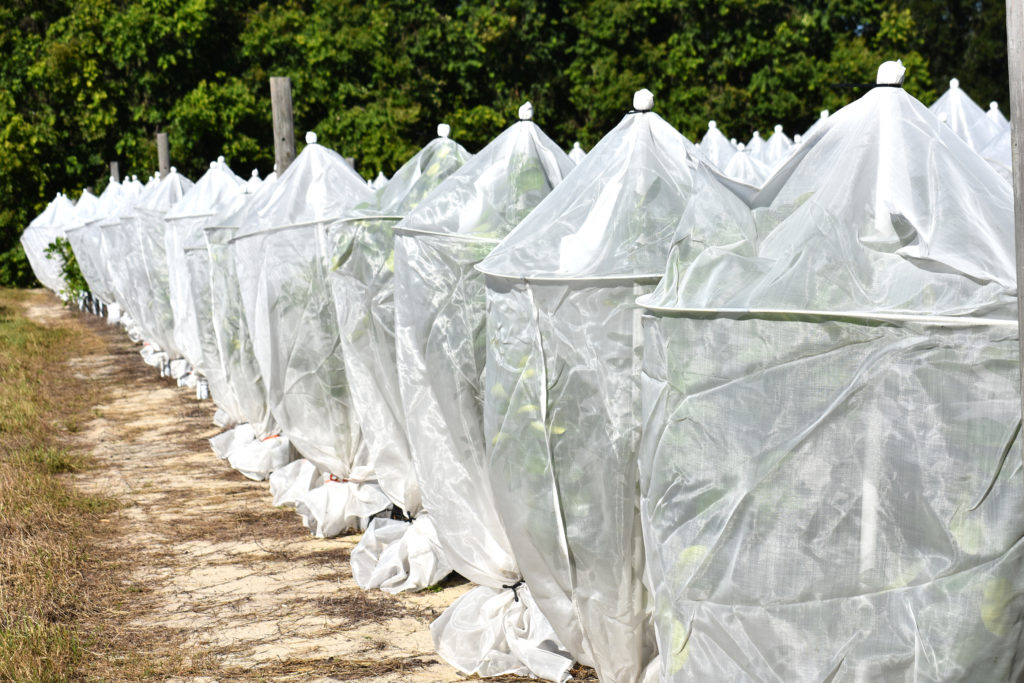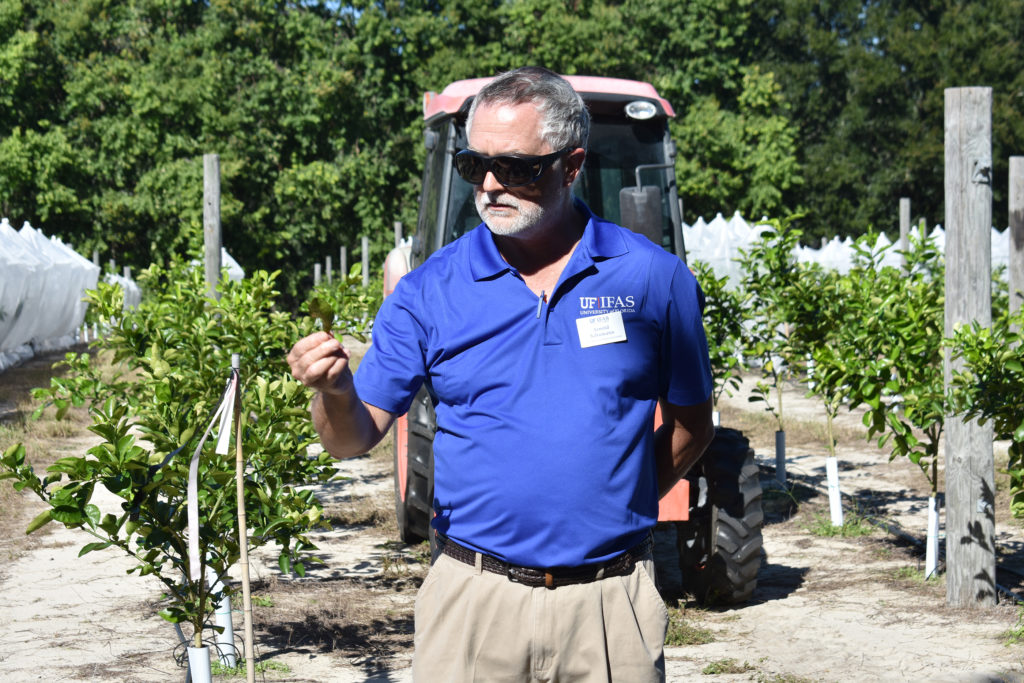
By Clint Thompson
Jackson grapefruit research trials are under the microscope at the University of Florida Institute of Food and Agricultural Sciences (UF/IFAS) Citrus Education and Research Center in Lake Alfred, Florida.
Scientists like Arnold Schumann are studying the HLB (Huanglongbing)-tolerant rootstock in hopes of providing growers an effective option to counter the ongoing issue of citrus greening.

One unique feature of the research is the application of mesh bag coverings being placed around the tree to protect against the Asian citrus psyllid, the vector of citrus greening disease. The coverings enable the trees to get a growth spurt and be able to fight off the psyllid more effectively once the bags are pulled off.
“Get them into a productive size before they even get the first impact of HLB which slows the trees down. Even the tolerant trees get slowed down. We’re keeping them completely free of that inhibition for up to two years, so they get a head start. We expect to see them to do better than the ones that are open from day one,” Schumann said. “We’re combining a lot of the factors like tolerance of the scion to HLB, tolerance of the rootstock to HLB and protection with bags. We’re enhancing growth by having high density aquaponics fertigation, and we’re putting a lot of factors together to increase the likelihood of being profitable and not succumbing to HLB.”
Bearing Fruit Quicker
Once the bags are removed, the trees are ready to bear fruit. This system allows for a quicker and more efficient productivity of the trees. Instead of waiting 3 to 4 years for the trees to bear fruit, these trees are producing fruit in 1 to 2 years.
“In my experience when you grow trees like this with hydroponics, in the second year they bear fruit. It’s quite amazing,” Schumann said. “The sooner you can pay back your loans and things the better. Early money is great.”
The research is also being studied in a more densely populated grove, with 871 trees per acre; compared to a normal grove with 218 trees at 10×20 spacing. But the reward is worth the investment.
“The cost of the extra trees will be more than offset by the early yield and high profitability of that early yield,” he added.
The trees are still vulnerable to other pests and diseases, but the mesh covering allows for appropriate chemical applications to be made.









